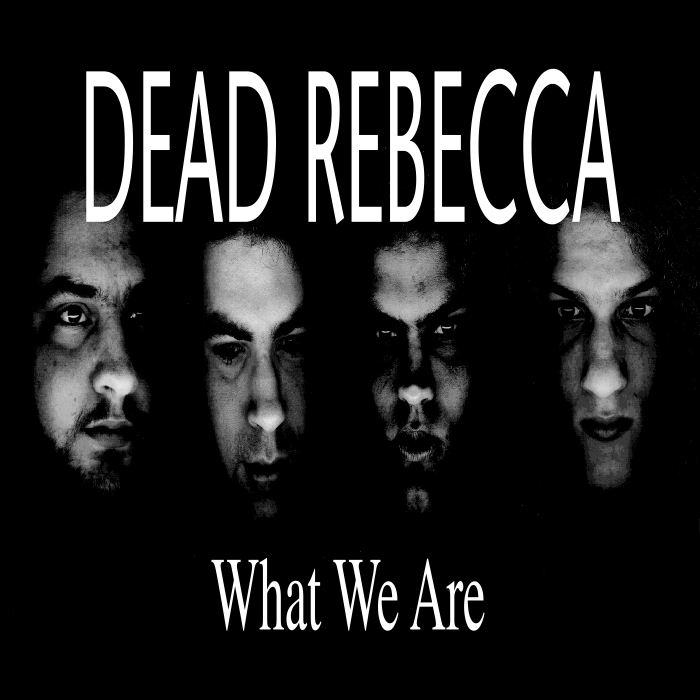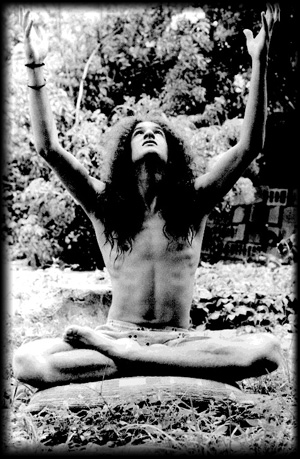
“DEAD!...
“Our name is Dead Rebecca...
“DEAD!...
“What we are...”
The intro tape marked the beginning of the end. As I glanced around the bar it occurred to me that this wouldn’t be a very graceful or accomplished place for a band to be put to rest. The crowd was a mixture of die-hard Dead fans and your basic heavy-metal club patrons; the establishment was your basic “pool table, dart board, exposed-beams-with-a-plywood-bar” type of place. But then it began.
The opening riff of the title track to the band’s only released recording, “What We Are,” announced itself to the room. William Fey began to sing what has come to be definition, philosophy, and greeting all at the same time. No cliché-ridden metal was to be found here. Expression of the momentary joy one finds in the comprehension and appreciation of poetic verse would have to do instead. No one seemed to mind.
Throughout the next three hours the band played the entire contents of their album, including the popular “No More Tomorrows” and the “On My Own Again / Another Prayer” finale, along with newer compositions such as “Now,” “The Best of Friends,” and the emotionally powerful “Great Spirit – Real Life.”
Special in-jokes and nods of appreciation for longtime friends and fans were expressed by the band’s performing the obscure earlier songs “Into Deliverance” and “Away from Darkness” and material by the band’s alter ego The Nose Band. Noted Nose Band tunes included the epic “The Micronauts (They’re Very Small),” the world’s longest rendition of the infamous “Cowhead,” and a fittingly appropriate rendition of “HAIR.”
At the band’s request, local alternative musicians Peabody, who are also long-time Dead fans, took the stage and performed a metalized version of their own “The Candle Song.”
Dead Rebecca consisted of William Fey on vocals, Mike Martin – drummer extraordinaire, John Maracich – a gifted artist who paints sound with a guitar, and bassist Jimmy Legnon whose 1990 addition solidified the band into a cohesive whole.
Like many bands, they began by playing a few original songs surrounded by various cover tunes that have come and gone. Unlike most bands, they eventually opted to drop the covers and concentrate on their own music.
It’s hard to believe in a music town such as New Orleans that it would be so difficult for a good, artistically original, hard rock band to find places to perform. Sadly this was the case.
This article originally appeared in the University of New Orleans’ Driftwood in 1992.

There is something scary about music like this.
In an industry that thrives on labels and stereotypes emerges Dead Rebecca, a sound that has converged its emotional and intellectual explorations onto a foundation of aggressive yet touching musical compositions. “There’s more substance to our themes than simple descriptions of sexual encounters and cliche rock’n’roll adages. We’re not against the debauchery involved with rock, we just hope to transcend into deeper realms of indulgence,” admits front man William Fey.
If you think this “smarter than thou” attitude has no place on the wild-side rock scene then think again. Dead Rebecca is high-energy when it comes to playing live, musically as well as theatrically. While the music is notorious for its intoxicated flow of energy, their live performances are filled with the expressionism needed to create an almost euphoric atmosphere – the reason their audiences range from college minds to street-smart urban youths. “We appreciate our fans without pandering to them. I think lovers of our music will naturally gravitate toward us,” notes guitarist John Maracich.
This four piece, together for three years, has made a name for itself throughout Louisiana and the Gulf South with their talent for composing moody music and their emphasis on individual expression within the band. “We’re all for individuality. We encourage it musically as well as personally – even among our road crew. Because our light and sound crews do their job better than we ever could, we offer our ideas and give them the freedom to create an atmosphere that they think would best complement Dead Rebecca,” says Fey in advocacy of this philosophy. In fact, the band believes this policy is what gained them the respect of their audiences.
With their self-produced debut What We Are (Homey! Records) on the market, Dead Rebecca sees many opportunities in which to please their fans and expand their following. The guys are really excited about their debut. “Hopefully it (What We Are) will bring in some money for us to invest into Dead Rebecca,” says drummer Michael Martin, “then we wouldn’t have to depend so much on our show admissions and our audiences could benefit.”
What We Are is an opportunity for Dead Rebecca to be heard and enjoyed by a mass audience. Jimmy Legnon, the group’s bassist believes that “some might pigeonhole us into labels like ‘uncommercial’ or ‘underground,’ but we believe that in a perfect world all bands would be original and progressive. If the musical audience was really as shallow as some proclaim, bands like Queensrÿche, Jane’s Addiction, and Metallica would not be where they are now.”
The band agrees. Being loyal to their listeners will always be the only way to breathe life into Dead Rebecca.
This bio was written in 1991.